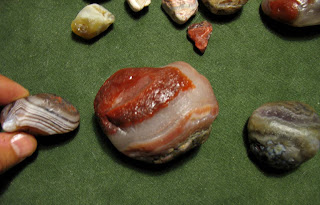Across the parking lot from the Great Lakes Shipwreck Museum is the Whitefish Point Bird Observatory. Even though the dedicated staff (mostly volunteers) are focused on monitoring bird migration, they also are very helpful to rockhounds. If you visit Whitefish Point, make sure to take time to stop by the bird observatory. Here are a couple of shots from their web page. First, a picture of their sign as well as a photo of their building (which has a nice gift shop and an informational/display room), and then an aerial shot of Whitefish Point.



The mission of this group is reprinted below.
The Mission of the Whitefish Point Bird Observatory is to document the distribution and abundance of birds in the Great Lakes Region, with special emphasis on migration. Research projects focus on assessing the status of bird populations and movements. Information acquired will be used to increase knowledge of bird migration, to encourage public awareness of birds and the environment, and to further bird conservation. Whitefish Point is a recognized Important Bird Area (IBA). Whitefish Point was designated an Important Bird Area (IBA) in 2007 due to the fact that 25-40% of the North American population of Red-necked Grebes are annually observed migrating past Whitefish Point.
The Important Bird Areas Program (IBA) is a global effort to identify and conserve areas that are vital to birds and other biodiversity. The Michigan Important Bird Areas Program officially began in March 2006 with the hiring of a coordinator by four managing partners: Michigan Audubon, National Audubon, Detroit Audubon Society, and Kalamazoo Nature Center.
If you are a bird lover, more information is available on their website http://wpbo.org/about/important-bird-areas/.
Here are some photos of the owl and piping plover displays, as well as a shot of their bird sighting board.



































































